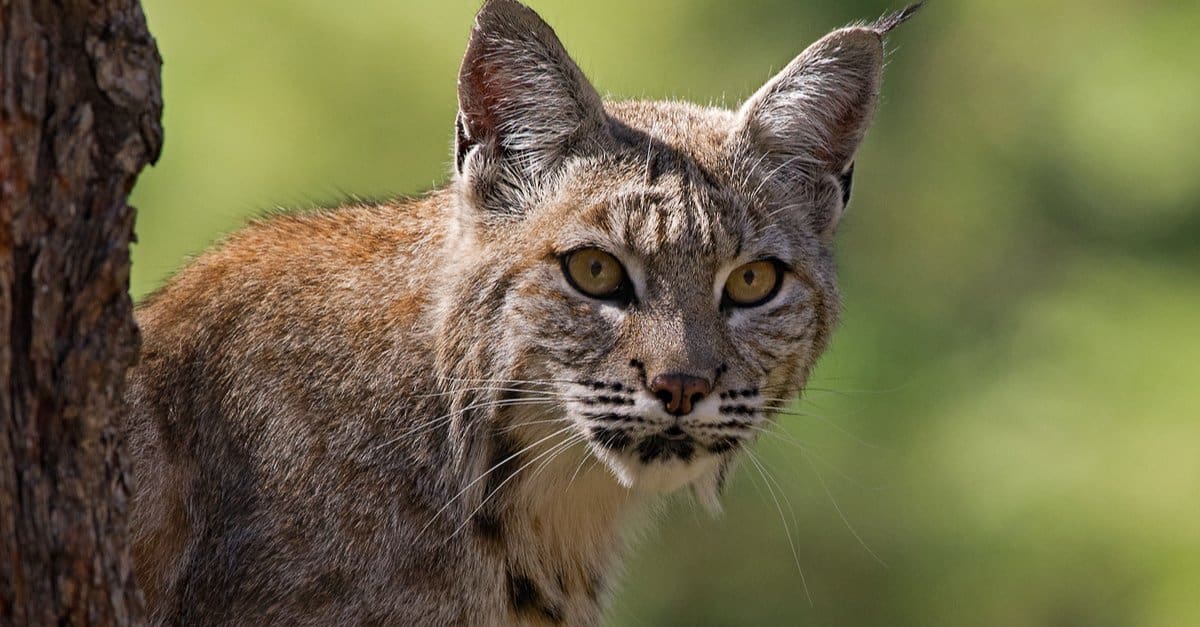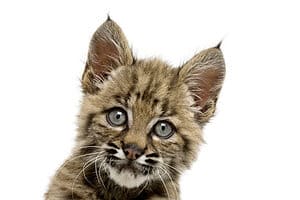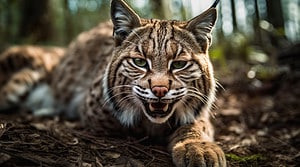Bobcats (also called red Lynx) are from the cat family. They are characterized by fur colors ranging from brownish red to buff with spots or stripes on them. They also have very long legs and large paws, and ear tips that are pointed and black.
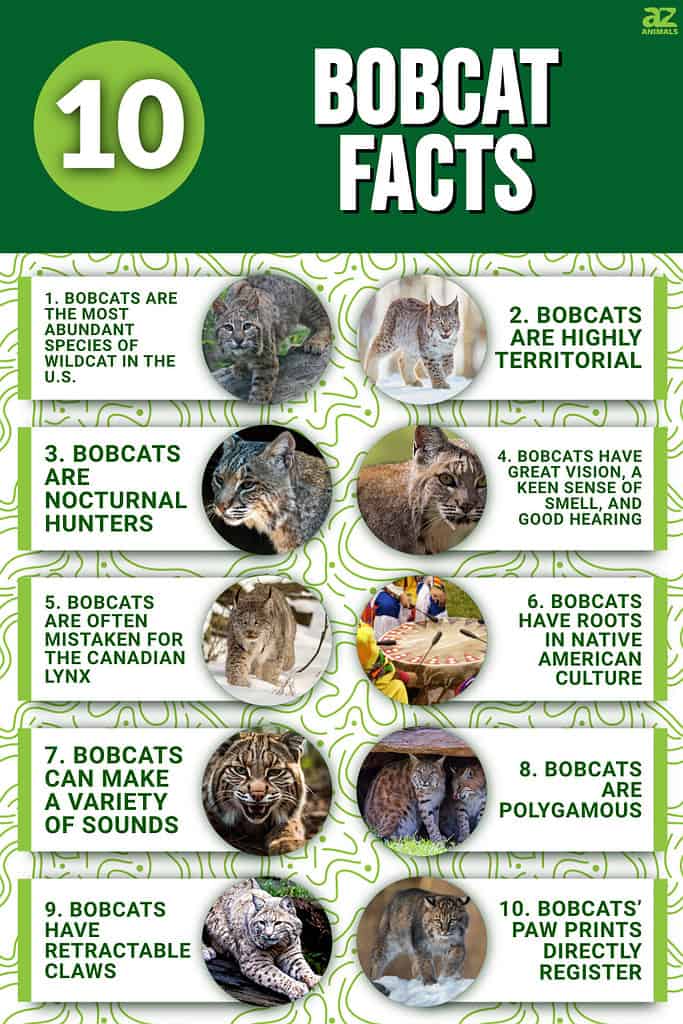
Bobcats are found in locations around Northern America. There are lots of incredible facts about bobcats, like being able to survive for a long time without food. This article will discuss ten amazing facts about these beautiful animals.
1. Bobcats are the most abundant species of wildcat in the U.S.
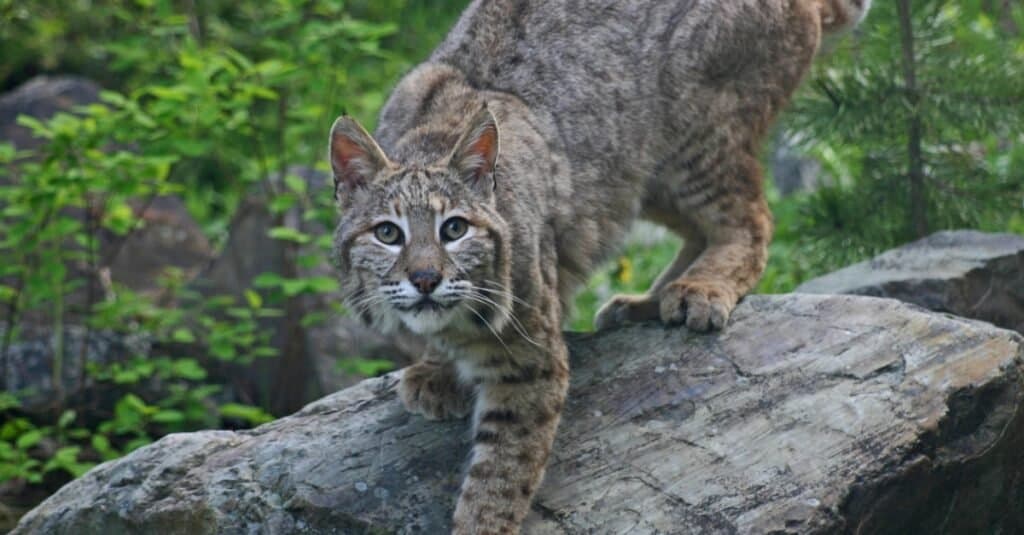
Bobcats have the largest population of all the species of wildcats existing in the United States.
©iStock.com/Anita Elder Design
Bobcats have the largest population out of all the species of wildcats existing in the United States. Despite the number of bobcats plummeting during the early years to the 20th century as a result of them being hunted because of their soft spotted fur, there are still about 2 to 3 million individual bobcats existing in the U.S. alone. They are not considered to be endangered.
The reason for their large population could be attributed to them being highly adaptable. They are able to live in different types of habitats, ranging from forests to swamps, mountains, and deserts.
2. Bobcats are highly territorial
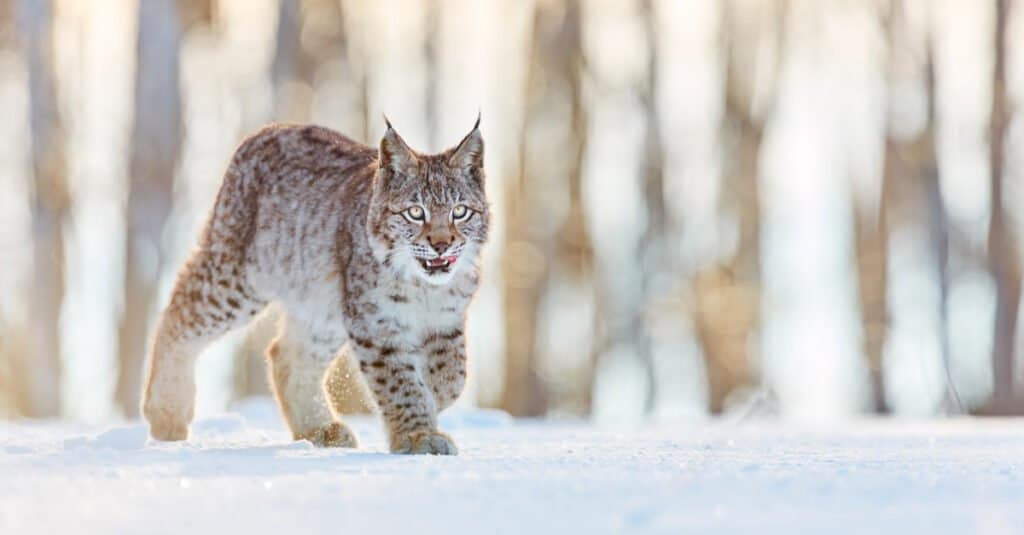
Bobcats are highly territorial that range from 1 – 40 acres.
©Petr Salinger/Shutterstock.com
Bobcats are solitary animals that move and hunt alone; they are highly territorial. They tend to have a territory ranging from 1 to 40 acres of land, with the males having a much larger territory than the females in all regions.
Bobcats mark their territory in various ways, like scent marking with urine, feces, and anal gland secretions. They do this to prevent other bobcats from sharing their environment, but despite this, their territories often overlap, with males sharing parts of their territory with other females or males. This is because bobcats don’t utilize all parts of their environment.
3. Bobcats are nocturnal hunters

Bobcats have an excellent sense of vision and hearing that helps them to effectively hunt at night.
©Karyn Honor/Shutterstock.com
Bobcats hunt primarily at night, and they can do so because they possess some characteristics which aid them. Their excellent sense of vision and hearing helps them to effectively hunt at night, and their strong and sharp teeth allow them to capture and hold down their prey.
Bobcats are great sprinters; they can run at speeds of up to 30mph when chasing down their target.
4. Bobcats have great vision, a keen sense of smell, and good hearing

Bobcats have tufted ears that aid their hearing.
©Laurie E Wilson/Shutterstock.com
Bobcats have eyes that contain a tissue called tapetum lucidum (often found in nocturnal animals) that allows them to adapt very quickly to low levels of light, and this gives them great vision when hunting at night.
Bobcats’ ears help them to pick up even the quietest sounds by swiveling front to back. They also possess little turfs located on their ears that aid their hearing which is used during hunting.
Bobcats also have a keen sense of smell, which is mainly used as a social function, like detecting scents used in marking territories.
5. Bobcats are often mistaken for the Canadian lynx
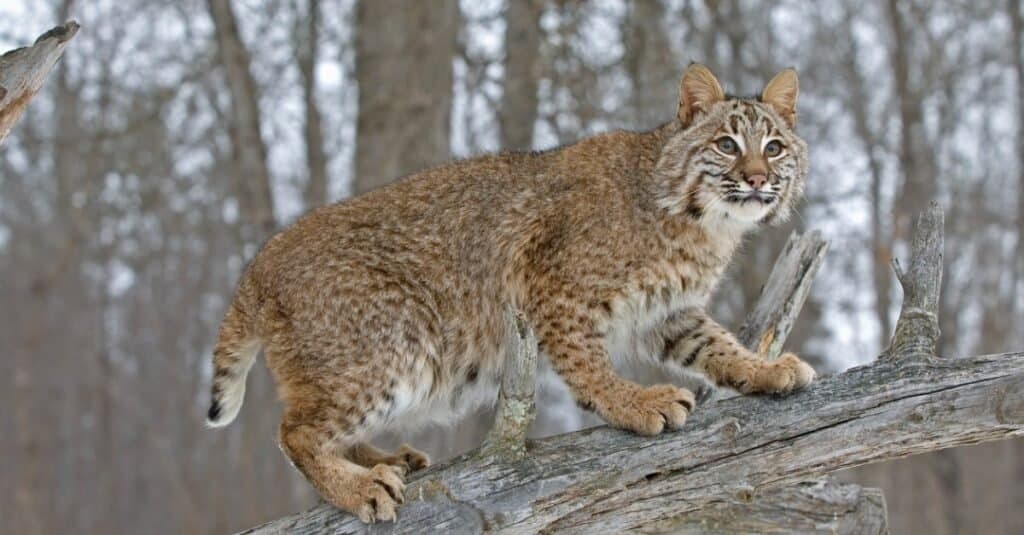
The bobcat is often confused with the Canadian lynx because they are more similar to each other than to the rest of the Lynx genus.
©iStock.com/JohnPitcher
The Lynx genus consists of four species which are the Canadian lynx, the Iberian lynx, the Eurasian lynx, and the bobcat. The bobcat is also a type of lynx, but it is often confused with the Canadian lynx because they are more similar to each other than to the rest of the group (i.e., the Iberian lynx and the Eurasian lynx).
However, the bobcat still has a distinct feature that differentiates it from the rest. Bobcats have distinct spotting on their coats and also have much smaller feet than the rest of the lynx species.
6. Bobcats have roots in Native American culture

Bobcats symbolize the opposite of coyotes in some Native American mythology.
Image: Bill Perry, Shutterstock
©Bill Perry/Shutterstock.com
Bobcats are found in North America. Thus, they have deep roots in Native American culture. They are linked together with the coyote in Native American mythology and are represented as the opposite of the coyote.
7. Bobcats can make a variety of sounds
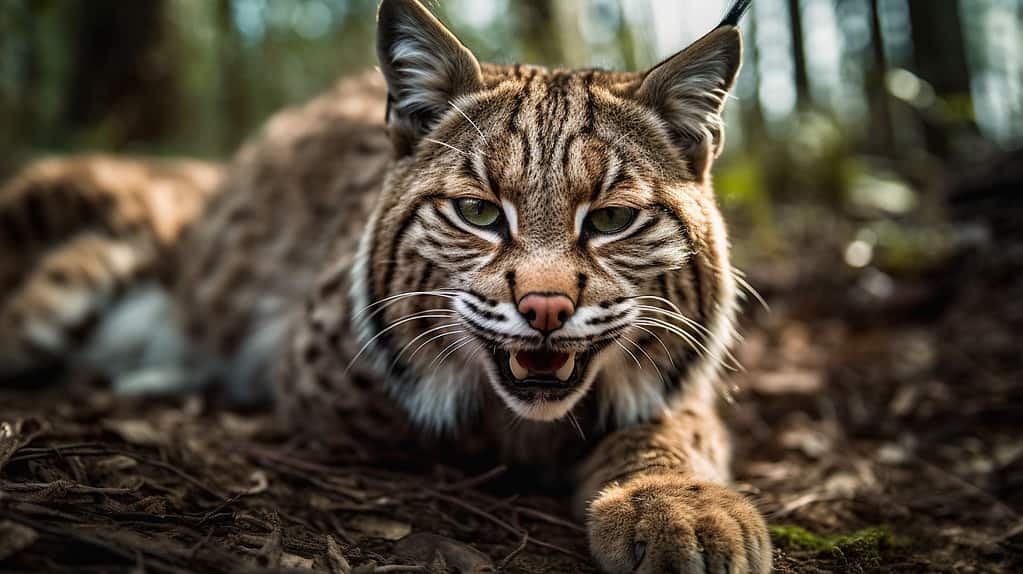
Although a bobcat is usually very silent, it can make noise for communication when the need arises. Bobcats meow mostly but can also scream, yelp, hiss, purr, yowl, snarl, and even bark. For example, when they are being hunted, they make noise to alert nearby animals.
8. Bobcats are polygamous

During mating seasons, a male bobcat will try to mate with multiple females, and a female will mate with numerous males.
© Johann Knox/Shutterstock.com
Bobcats do not have only one mate. During mating seasons, a male bobcat will try to mate with multiple females, and a female will mate with numerous males until the mating season ends. This mating season usually peaks during January and February.
The female yowls frequently to alert males of her presence, and when a male bobcat arrives, the female shows that she accepts it by making sounds and arching her back while circling around the male. They then chase each other and throw themselves at each other; after a while, they mate. After that, they move on to the next partner.
9. Bobcats have retractable claws
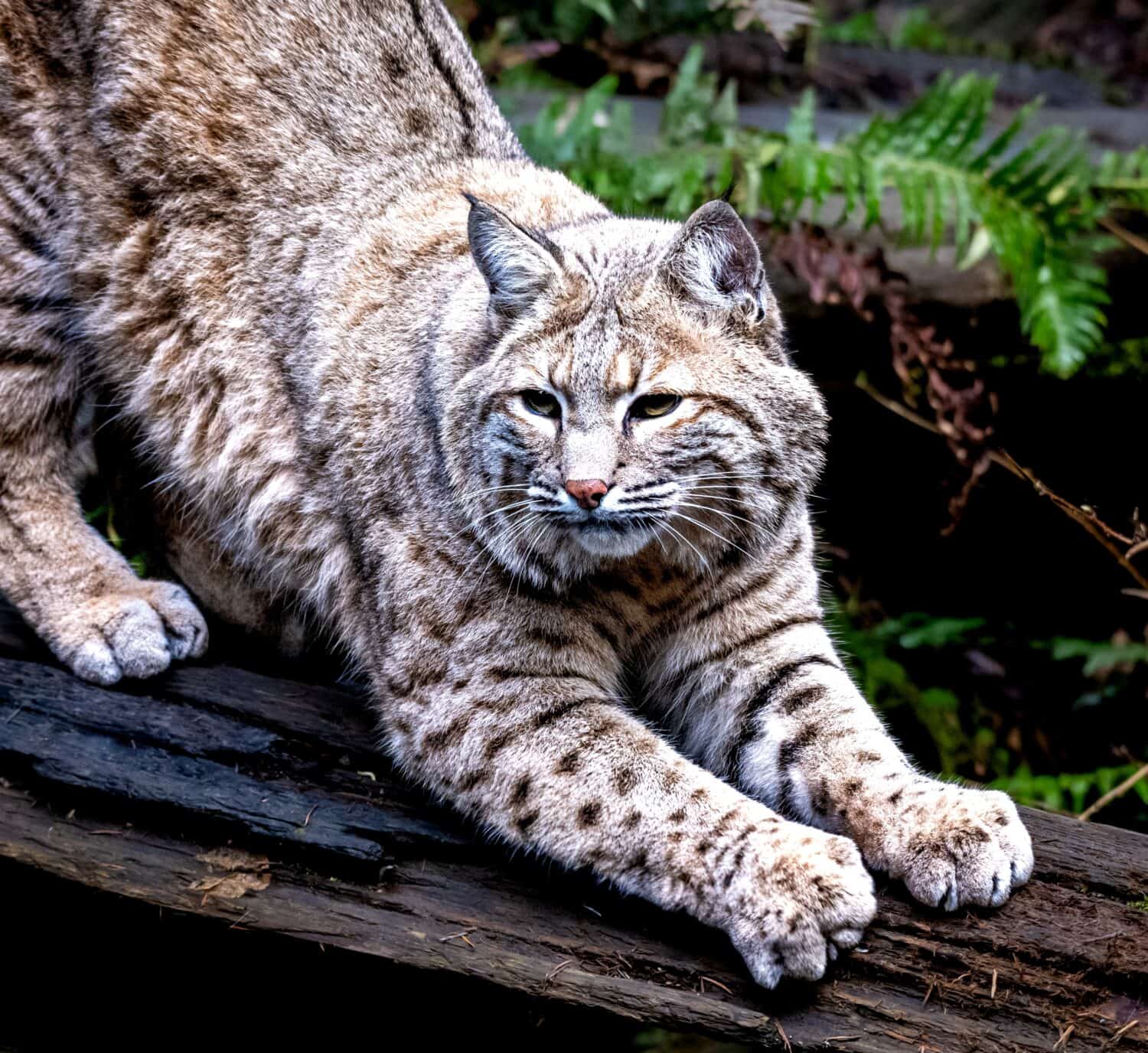
Bobcats have retractable claws like their housecat cousins.
Image: Jeff Westhead, Shutterstock
©Jeff Westhead/Shutterstock.com
Bobcats can retract their claws; hence their claws do not touch the ground, which ensures that the claws do not wear and tear. This protects the sharpness of the claws and helps them to attack prey quickly. The retractable claws also allow bobcats to sneak up on their prey.
10. Bobcats’ paw prints directly register
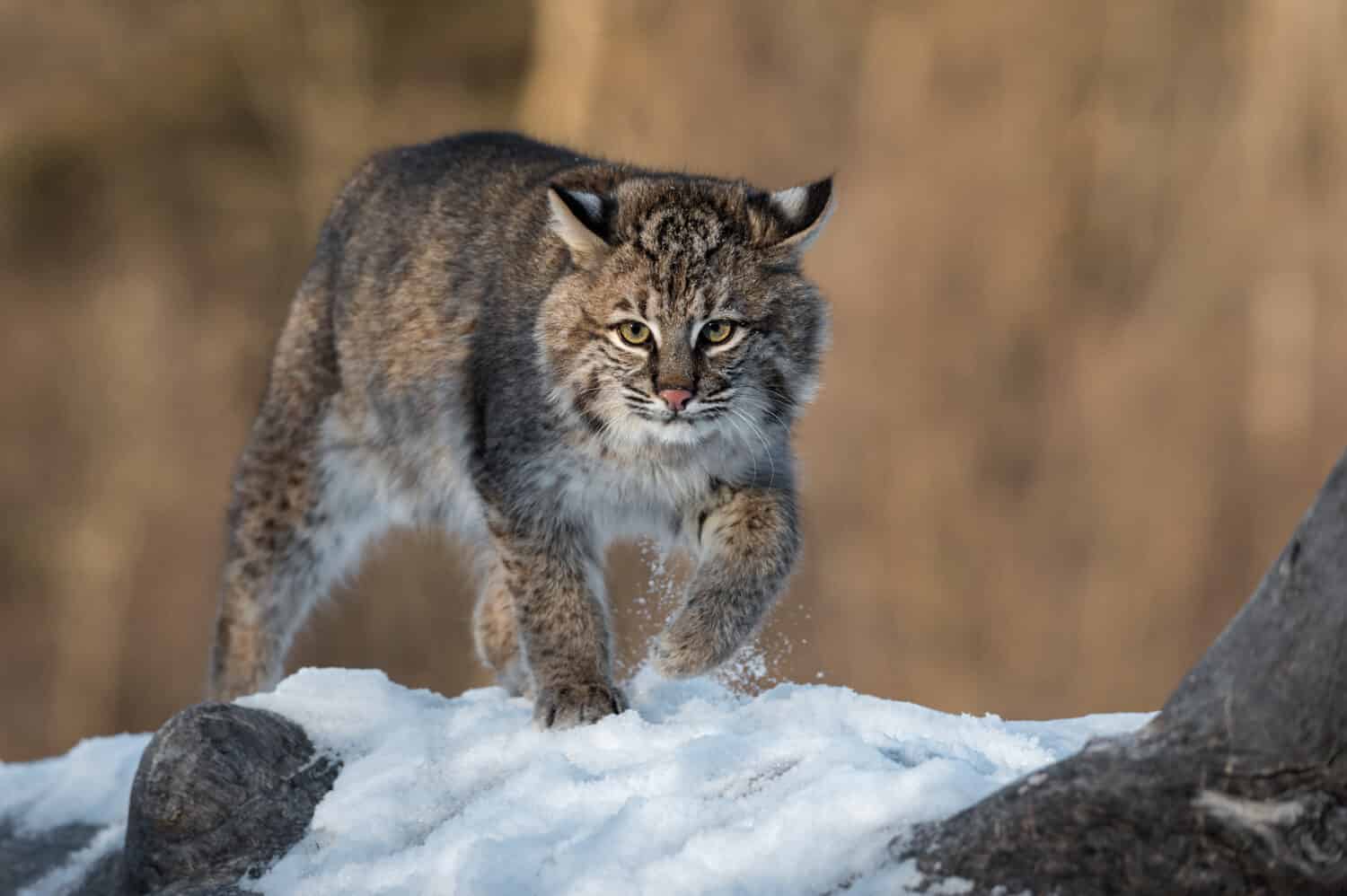
Bobcats create fewer prints because their hind paw lands in the front paw print.
Image: Holly Kuchera, Shutterstock
©Holly Kuchera/Shutterstock.com
A direct register is when the hind paw almost lands or lands perfectly on the front paw while walking. Bobcats do this while walking to minimize the noise made during walking, which helps them in moving stealthily and creates fewer tracks on the ground, which prevents predators from easily tracking them.
Thank you for reading! Have some feedback for us? Contact the AZ Animals editorial team.

